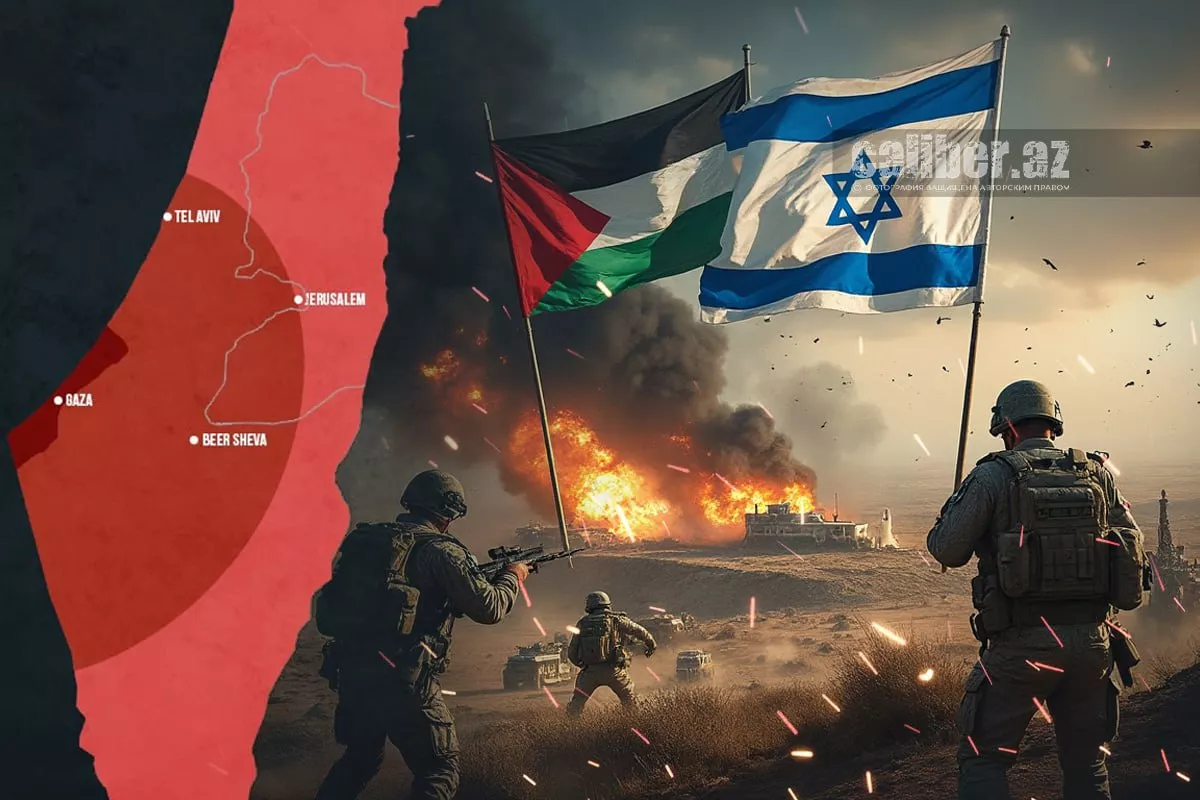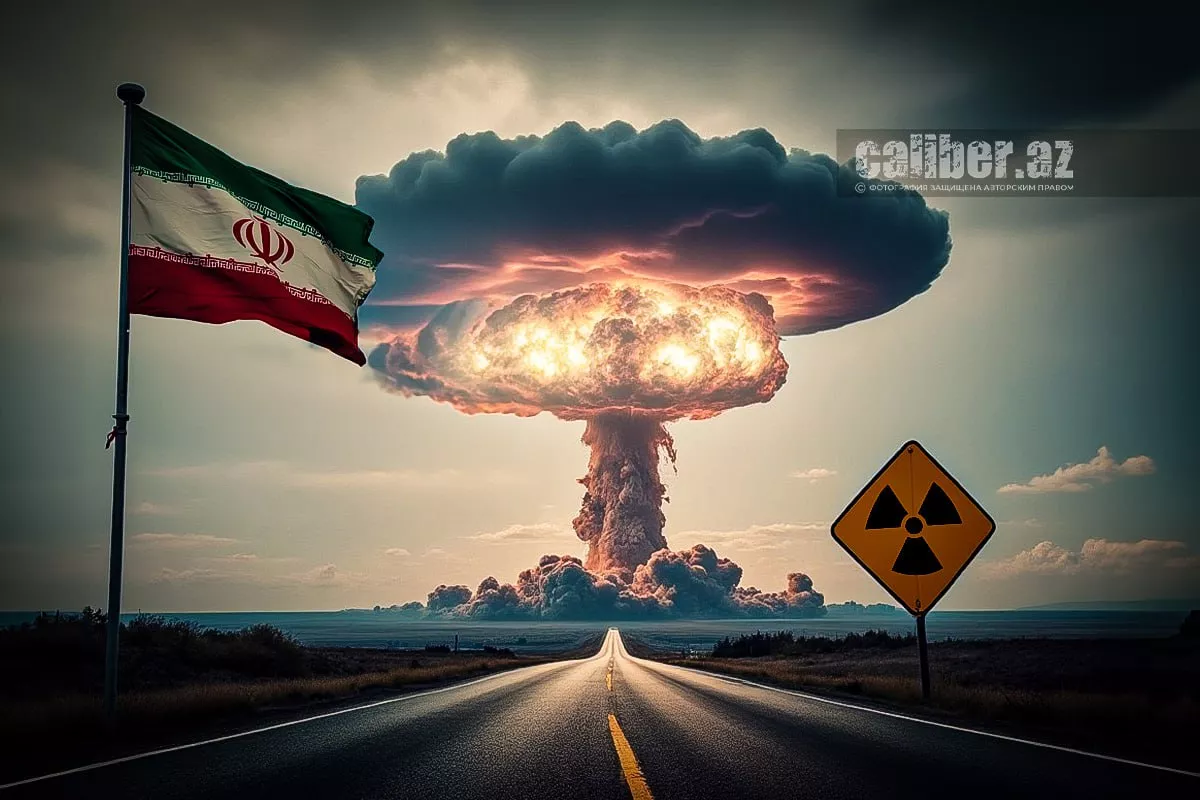Israel vs. Iran: Interim results of great Middle East war What’s next for the Axis of Resistance?
The great war in the Middle East began on October 7, 2023, with an attack by the Palestinian group Hamas on Israel from the Gaza Strip. The assault resulted in the deaths of 1,200 Israeli soldiers and civilians, with approximately 240 taken hostage. In response, Israel launched strikes on the Gaza Strip, the origin of the incursion. As a result, Gaza was devastated, and according to its Ministry of Health, over 40,000 people—both Hamas militants and civilians—lost their lives. However, the conflict was not confined to Gaza.
Hamas is only one part of a network of Iran’s allies known as the Axis of Resistance, which is primarily composed of Shiite groups. This coalition includes Hezbollah, an armed political party that largely controls Lebanon; the Assad regime in Syria (now defunct); militias in Iraq that exert significant influence over the country’s leadership; and the Houthis, a tribal militia that controls a third of Yemen, including its capital, Sana'a. All these forces, alongside Iran, have engaged in a war with Israel and its ally, the United States, for dominance in the Middle East.
As stated by Iran's Supreme Leader and de facto absolute ruler, Ali Khamenei, the goal was to ensure the unity of the resistance front. By subjecting Israel to missile strikes and commando raids, the Axis of Resistance sought to weaken the country, paralyze its economy, and compel its population to emigrate. Simultaneously, pro-Iranian militias attacked U.S. bases in Iraq and Syria, aiming to force the Americans to withdraw from the region. Meanwhile, the Houthis, using missile strikes, disrupted the movement of commercial vessels in the Red Sea, a critical global trade route.
Israel delivered devastating airstrikes against Hamas and Hezbollah before launching a ground invasion into southern Lebanon. At the same time, Israel and Iran exchanged several strikes—Israeli forces targeted Iranian air defense systems in retaliation for Iranian drones and ballistic missiles. Finally, in response to Houthi missile attacks, Israel, alongside U.S. air forces, conducted strikes on Yemen.

By the end of 2024, the interim results of the war proved grim for the Axis of Resistance. Although Hamas managed to retain part of its forces in Gaza, it suffered significant losses, including thousands of fighters and key military and political leaders. Among the latter was Ismail Haniyeh, who was killed in an elite, heavily guarded guest complex in Tehran, deep in enemy territory.
Hezbollah, despite effectively halting Israel's ground offensive in southern Lebanon through guerrilla tactics, incurred devastating losses. Nearly all of the group's military and political leadership, including Sheikh Hassan Nasrallah, was eliminated. Thousands of fighters were killed or severely injured in bombings and sophisticated strikes, such as the "pager attack." The losses were so severe that the organization signed a ceasefire agreement with Israel and ceased its attacks on northern Israel—something it had previously refused to do until Israel ended its strikes and occupation of Gaza. Thus, in the Lebanon-Israel conflict, the final word belonged to Israel.
Iraqi militias have officially announced their withdrawal from the armed conflict with Israel. Even earlier, these militants had ceased attacks on U.S. military bases in Iraq and Syria. The reasons were the effective U.S. airstrikes on their bases and the psychological impact of Hezbollah's example. Currently, Iraqi militias control the lion's share of the country's oil export revenues (Iraq is the fourth-largest oil exporter globally). Their state budget funding was recently increased several-fold, and they hold numerous key government positions. Having secured a prosperous future for themselves and even their descendants, they appear unwilling to engage in war despite their ties to Iran.
Iran itself suffered heavy losses during one of Israel's strikes. Around 150 Israeli fighter jets, without entering Iranian airspace, launched precision-guided munitions that destroyed a significant portion of Iran’s air defense systems. As a result, Iranian airspace is now, if not entirely, then largely vulnerable to further incursions. Additionally, by assassinating Ismail Haniyeh, Israel demonstrated its deep penetration into Iran's security systems and power structure. This suggests that any target, from Iran's nuclear program to its military leadership and even the Supreme Leader, could be next.
Meanwhile, Iran’s missile attacks inflicted little damage on Israel, highlighting Israel’s military-technological superiority. Fighting against cutting-edge technology has proven to be an immense challenge for Tehran.

But the most devastating blow to Iran came in Syria. Israeli strikes severely weakened Hezbollah, the main pillar of President Bashar al-Assad's regime in the north of the country. Following this, Syrian Sunni opposition forces launched a powerful offensive from Idlib province, capturing Aleppo—Syria’s second-largest city—and defeating the government army within 11 days to seize Damascus.
The new Syrian regime, led by Ahmed al-Sharaa, the leader of the Hayat Tahrir al-Sham group, aligns itself with Turkey and its ally, Qatar. It proudly credits itself with eliminating Iranian influence in Syria. This development has removed a central link in Iran's Axis of Resistance, significantly disrupting Hezbollah's supply lines and leaving the group vulnerable to becoming the next major loser in the conflict.
This leaves Iran and Yemen, or more specifically, the Houthis, who control the north of the country and its capital, Sana'a. The Houthis continue to fire ballistic missiles at Israel, demanding an end to the siege of Gaza. However, the Houthis neither produce nor likely launch these missiles themselves. This tribal militia serves primarily as ground security for Iranian missile systems and their operators.
Israel is conducting retaliatory bombings in Yemen, exploiting a key weakness of the Houthis. While they have a large stockpile of hidden missiles, they have few ports—only three: Hodeidah, Salif, and Ras Isa. These ports receive Chinese tankers loaded with Iranian oil, as well as ships carrying Iranian weapons. They are also critical entry points for humanitarian aid and food supplies. Yemen’s infrastructure and economy, already devastated by years of civil war, depend heavily on these deliveries. Without them, over 20 million Yemenis face the threat of famine.
As of now, Yemeni ports Ras Isa and Hodeidah, located along the Red Sea, have been rendered inoperable due to Israeli airstrikes. Port infrastructure has been severely damaged, with fires breaking out after strikes on oil storage facilities. “The attack has completely disabled the ports,” a source told TASS, with other agencies corroborating reports of strikes on the ports.
Using its air force, Israel can keep these ports non-operational through continued bombings, effectively blocking Iranian military aid and fuel supplies. However, this would also disrupt the flow of food supplies, potentially leading to a catastrophic humanitarian crisis for Yemen's civilian population. The full impact of such actions on Yemen’s people is tragically predictable.
Israel’s powerful navy adds another dimension to its campaign against the Houthis. The Israeli fleet could be deployed to enforce a blockade and launch strikes on Yemeni ports. Reports indicate that Israel plans to escalate its military actions, with more intense airstrikes on Yemen. Meanwhile, U.S. and coalition air forces occasionally conduct strikes on Houthi positions, further pressuring the group.

As for Iran, there is growing domestic discourse on the need to develop nuclear weapons. The Axis of Resistance still exists, but it has suffered a series of crushing defeats. Previously, Iran relied on its allies to ensure its security and project influence across the Middle East. Today, these proxies are either crippled or significantly weakened. To restore its influence, Tehran may view nuclear weapons as a strategic necessity. While no formal decision has been announced, there are numerous indications that Iran is moving toward becoming a nuclear power.
This development increases the likelihood of an Israeli or joint U.S.-Israeli strike on Iranian facilities tied to its missile and nuclear programs. Israel’s confrontation with the Houthis also intensifies its motivation to target the decision-making hubs in Tehran. Such strikes could occur in the coming weeks or months, marking a significant escalation in the region’s ongoing conflict.








